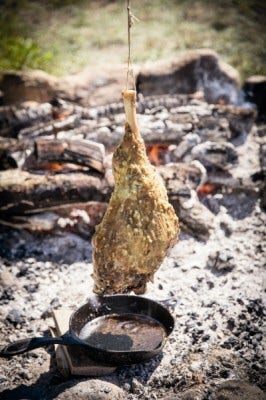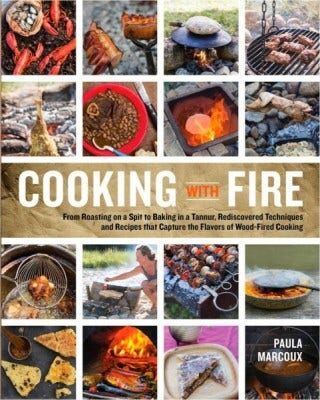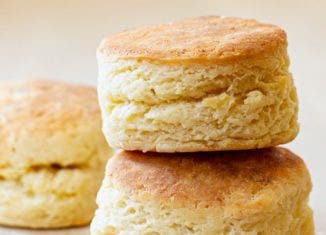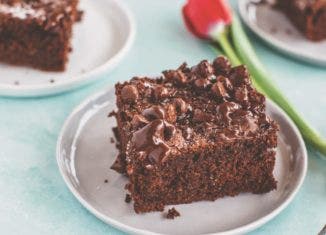Fox & Food: Cooking with Fire

This outdoor cooking season, leave the lighter fluid at home. Archaeologist and author Paula Marcoux shares tips and techniques of the historic tradition of cooking with live fire with Fox News Radio’s Lilian Woo.
Take a LISTEN:
Follow Lilian Woo on Twitter: @LilianNY
Click HERE to listen to more FOX & Food podcasts
RECIPES
Twine-Roast Leg of Lamb
Unless you have the luxury of butchering your own lamb or buying directly from a slaughterhouse, the leg you purchase will most likely have had the handy string-attachment point known as the “heel” sawn off. Here’s your opportunity to get in touch with your inner orthopedic surgeon; see page 61 for instructions on how to prepare the lamb leg for hanging.
How long will it take to cook? Indoors, with a fireplace jamb backing the heat against the roast, it will scarcely take any longer than baking it in a conventional oven — about two hours. Outdoors on a winter night with a cold wind snatching at the heat, plan on around twice that.
The mustard plaster administered to the lamb in its last 45 minutes of roasting reflects the inspired practice of my grandfather, Victor Amédée Brassard, a rÔtisseur of high standards.
1 leg of lamb, full bone-in
10 cloves garlic
31/2 tablespoons olive oil
2 teaspoons kosher or sea salt
Freshly ground pepper
A bunch of rosemary or thyme, tied together as a basting brush (optional)
2 tablespoons dry mustard
2 tablespoons all-purpose flour
1–2tablespoons water, as needed
1/2 cup lamb, chicken, or beef stock or wine or water or some of each
10 to 14 servings
1. From 4 to 24 hours ahead, season the lamb: Wipe the meat dry. Sliver 8 of the garlic cloves, and using a very small sharp-pointed knife, make incisions all over the roast and insert the garlic into them. Massage the leg gently with 2 tablespoons of the olive oil, and sprinkle with 1 teaspoon of the salt and plenty of pepper. Cover and chill, but bring to room temperature before roasting.
2. Figure out the logistics for suspending the lamb as described previously and get a nice hardwood fire burning. Remember that you will want the lamb to have room to spin unencumbered a few inches away from, and slightly diagonally above, the coal bed. The fire will continue to burn smartly in a more or less parallel plane to the leg, but a foot or more away.
3. When you have a deep bed of coals under the fire, use a fire shovel to push the actively flaming wood to the opposite side of the hearth from where the roast will hang. Hang the leg of lamb up from the attachment point you have arranged, and double-check to make sure it is entirely secure before you step away. It will probably start spinning slowly of its own accord; encourage it along by twirling the shankbone in the direction it seems to want to go. Place a pan beneath the roast to catch the drippings. Draw some coals closer to the pan, so that you have a lovely steady bed of coals sloping from it up toward the actively burning logs. Look critically at the arrangement. Visualize exactly how the leg is exposed to the heat. What can you do to ensure the most even cooking? Probably one thing is to feed the fire more wood, from the side away from the roast. You are starting the coals that will come into play in 40 minutes or so.
4. That’s really all you have to do for the next few hours: keep the leg rotating slowly (which requires very little attention), and provide a nice bed of coals and brisk fire at appropriate distances from the roast. It’s fun and picturesque, but scarcely necessary, to brush the roast with the drippings using a bundle of herbs. It pays to be aware of the movements of any dogs or other unrestrained carnivores in the vicinity.
5. As the roast turns, you can mix up the mustard plaster any time you like. Mince together 2 cloves of garlic and 1 teaspoon of salt and plenty of freshly ground pepper. Stir into 11/2 tablespoons olive oil. Add the mustard and flour, and as much water as it takes to make a somewhat drippy paste. Set aside until needed.
6. When the roast seems to be about three-quarters done (say, an internal temperature of 120°F or so), apply the mustard plaster. Use a large pastry brush and just lather it on the leg of lamb on all sides. Get a fresh bed of coals set up and continue roasting until the internal temperature of the roast is 145°F, then inspect your handiwork. If the plaster has not firmed up into an irresistible crust, build up your fire to provide one last blast of heat. Ideally, the plaster will be crispy and the lamb will approach 150°F at the same moment.
7. Get someone to help nudge a warm platter under the roast while you snip the string. (Believe me, it is not hard to rustle up helpers at this point.) Place the leg of lamb, loosely tented with some foil, in a warm place to rest for 20 minutes. Strain the drippings into a small nonreactive pot and heat in the remaining coals, adding the stock. Boil for a few minutes, taste, and correct seasoning.
8. Carve the roast and serve with the sauce.
Preparing the leg for roasting
- Drill a clean hole, making sure there are no sharp edges.
- Thread string through and make a square knot.
- Suspend using a knot that won’t slip, like a bowline.
- Use a rolling hitch to attach the other end of the string to a tripod.
- Or use two round turns and two half hitches to attach to a chain.
Twine-Roasting Poultry
If you are roasting poultry, truss compactly and, if the bird is larger than a game hen, run at least two lengths of the twine through the body cavity. Join them together above the neck area, and form a hanging loop, experimenting with it to make certain that the fowl will hang securely and as plumb as possible. Even a little slouching or leaning will have a considerable negative effect on the evenness of roasting. (Historic sources indicate that roasting poultry was possibly carried out by merely looping the twine around the legs of the bird. A modern grocery-store chicken rigged up thus would signal doneness by utterly slumping off its drumstick bones, I’m afraid. Attempt this only with a backyard fowl that has the body integrity that comes from supporting its own weight in life and pecking at bugs and so on.)
Pita
For home cooks, pita is a great entry into the world of flatbreads, even into baking in general. Its formula is simple and the dough is easy to handle. The loaves’ thickness and relatively small diameter doesn’t demand any daredevil dough-stretching skills. You don’t need anything fancy in terms of equipment; because pita may be small, you can get away with using a 10-inch cast-iron frying pan. The dough can be held over in the fridge for a day before baking, helping it fit conveniently into a busy schedule. A bagful of pita in the freezer is like gold at lunch-making time. I find the griddle method irresistibly fun, but if you’d rather, you may bake the prepared pita in a hot wood-fired oven.
Equipment
Flat heavy griddle, any size
Rolling pin
2 or 3 clean cotton kitchen towels
Non-serrated tongs or a metal spatula or asbestos fingers
Ingredients
16 ounces bread flour
8 ounces whole-wheat flour
2 cups plus 2 tablespoons warm water
1 teaspoon dry yeast
1 tablespoon kosher salt (only 21/2 teaspoons if you omit the leaven)
5 ounces white or whole wheat leaven (optional)
Makes 14 or 16 small pita
1. Mix the flours and water in a large mixing bowl, or in the bowl of a stand mixer if you’d like to use one. Stir the mixture with a fork just until well combined with no dry patches; add a touch more water if necessary. Let stand at room temperature, covered airtight, for 30 minutes.
2. Add the remaining ingredients and mix well for a few minutes, by hand or with a dough hook. Scrape into a nice ball and cover airtight.
3. Ferment at warm room temperature 90 minutes, scraping the dough out onto a floured surface every 30 minutes to stretch and fold it — pull it into a rough oblong, then fold it in thirds like a letter, once on one axis, and once on the other. Incorporate as little new flour as possible. (If you would like to retard the dough overnight, place it in an airtight container into the fridge directly after the second stretch-and-fold exercise.)
4. When you are ready to bake, prepare your fire setup, griddle, and fuel as described on page 95. Divide the dough into sixteen 21/2-ounce balls, and preshape them evenly round. (Dough will make only 14 portions of that size if you omit leaven.) Keep covered to keep them from drying out while they rest 15 to 30 minutes.
5. Preheat your griddle over a moderate flame. Use a short rolling pin to roll one of the balls out to an even circle about 6 inches in diameter. Place it gingerly on the griddle. Start rolling out the next one, while another part of your brain slowly counts to 15. Flip the bread. If the heat is right, the side that was down should be just beginning to set up but not brown. Return to your rolling pin and finish rolling out the second pita.
6. Peek under the pita on the griddle. If it looks baked and is flecked with brown, flip it over again. (Take a second to check your fire; does it seem steady? Should you add more twigs or whatever?) By now your pita may be puffing up. If it just bubbles a bit and then stops, take action to help it: holding a towel bunched up to protect your fingertips, press down gently on one of the bubbles. This almost always has the effect of spreading the steam out between the upper and lower “crusts” of the pita and forcing the pocket to open. If nothing happens, flip it over and try the other side; on rare occasions you’ll have a dud, in which case you’ll have to eat it.
7. Remove the pita from the griddle soon after it has puffed. If it bakes too long it will be undesirably crisp; pita should remain soft. Place the pita on a cloth and cover lightly; it’s fine to stack them as you go along.
8. Once you figure out your rhythm, you may find you can add another griddle (or cook two pitas side-by-side on an oblong cast-iron griddle).
Note: You may use a saj or other convex griddle to bake this dough into larger, flatter breads that are decent for wrapping falafel or other fillings. Divide the dough into twelve 4-ounce portions, preshape, and roll out into 9-inch circles. Bake on the preheated saj, turning once.
Flatbread Variations, Ancient and Modern
In its most authentic form, shrak (see facing page) is baked on a hearth of river pebbles in a tabun (see page 291). A similar Persian bread, sangak, is baked on a bed of blazing hot pebbles in a very large wood-fired oven, even when commercially produced. Very good versions of this wonderful bread, however, are also made on the saj, the large convex griddle.
Archaeologists have turned up shards of large perforated clay griddles on Iron Age sites in the Levant. These griddles seem to have been installed in hearths and were certainly the predecessor of the saj. It’s impossible to say, based on the current research, what sorts of breads were baked on these clay griddles, and why they would be used in one place and tabuns in another not so far away.
Diffused during the Ottoman Empire, the brass, and then steel, saj has played a part in Middle Eastern baking for centuries. It is relatively portable and very efficient on fuel if well used.






